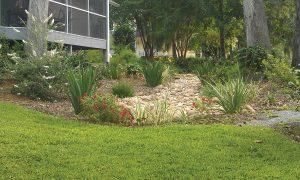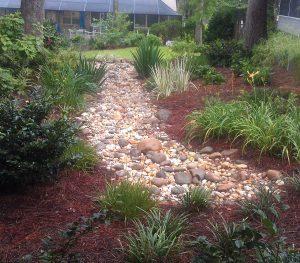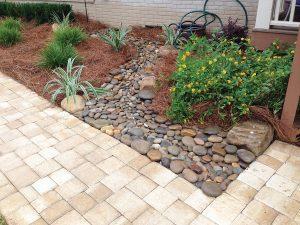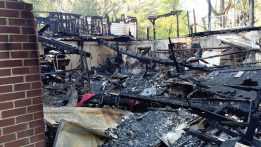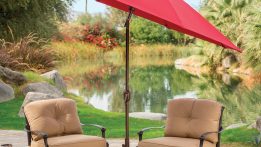Recognizing the signs that you either currently have a drainage problem or that one is going to occur in the very near future is vitally important when preventing serious unexpected water damage to your home or yard. Being able to recognize all the signs is important in order for you to be able to fix or repair the areas before things get out of hand.
When determining just what is happening at your property, always start uphill. Since all water flows downhill, start examining where it’s coming from and how it’s getting there. From that point moving forward, you can determine a plan on how to tackle further damage to your home or yard by using the theory of what I like to call the 3 “D’s” of drainage.
Divert
Ask yourself if you can divert the water away from the area of your home that could be potentially damaged and in another direction. Remember while doing this to keep your neighbors in mind, as we never recommend making your problems someone else’s. In most cities or counties, they will not allow you to intentionally ‘divert’ your water to someone else’s property. What we simply mean is to always make sure the water is flowing away from your home’s foundation to prevent things like foundation settling, mold, mildew and moisture control issues. By doing this alone, you will reduce potentially large and damaging unintended costs to your home. You would much rather deal with damaging your yard than your house.
Divide
After you’ve come up with a way to divert the water flow away from your home or damaging area in your yard, then determine, if it is a large enough area, how you can divide the water up so that you can control just how much water is going into a single location. Some examples of this could be installing a French drain, box drain or drain basin, atrium drains, channel drains, etc. By installing a system that can catch the water and take it underground through a series of pipes or gravels, you have then divided the amount of water and reduced the amount of sheet flow that is running across your yard.
Disperse
After diverting and dividing the water, starting at the highest point of your property, then look at some ways that you can “disperse” the remaining water or, in other terms, slow the speed of water down substantially. Water can run in your yard at a rate high enough to easily remove mulches, soils, and even move rocks the size of an inch downhill and cause even greater damage. Some solutions and products that we have used over the years are dry creek beds, groundcovers, jute mesh and non-woven and woven fabrics to put down in flowerbeds to help not only keep weeds down and out but also stabilize soil. These solutions are multi-purpose. One example could be using large decorative river flats along with a variety of Sedum’s and Irises. Use these inside, along the edges, and at the beginning and ending of the dry creek bed so that you have created friction for the water. This process slows down the flow of water greatly and makes for a nice looking landscape feature instead of a drainage fix.
In the long run, you will spend much less money by fixing some small problems now before they become a larger unplanned disaster later on. Prevention is always cheaper than disaster!! Call a local drainage expert to resolve your issues now, before disaster strikes! ![]()
Jerry NeSmith II
NeSmith Landscapes
850-528-2954



